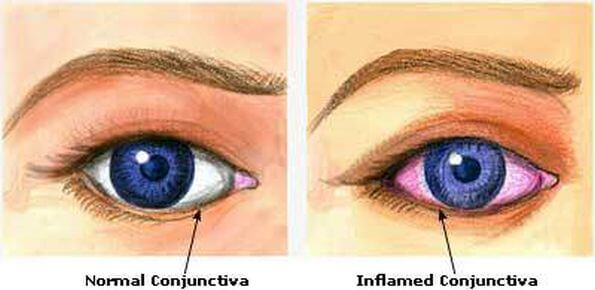Robert Harrington – It really is common sense that when you cover the eyes with a synthetic plastic lens, a whole new environment could be created both on and in the eye. The preceding headline indicates just how much the naturally occurring bacterial flora (also known as the eye microbiome) in the eye changes.
With the introduction of contact lenses on top of the eye, the interaction between the plastic material and the eye conjunctiva sets up a much more conducive environment for eye infections to occur.
“Researchers used genetic testing to find out exactly what was present, and said the discovery could explain why contact lens wearers are far more susceptible to eye infections.” [1]
While the predictable results of this study are quite self-evident, millions of lens-wearers are seemingly indifferent to the eye infections which inevitably develop. The eyes are full of extremely delicate structures and fragile tissues which should be protected. And yet many people are quite casual about putting something in them which will put them at risk.
Why are there over 5000 strains of bacteria that live in the eye in the first place?
There is a whole biological science that is dedicated to the study of body bacteria. It hypothesizes that the human body is actually an amalgam of billions of bacteria working harmoniously to perform myriad tasks without which the human body could not survive for very long.
Just as the small intestine has a certain balance of eugenic bacteria and the mouth has its own bacterial mix, there are specific bacteria which live on and in the eye. When the balance is upset, as it is with the long-term placement of contact lenses, the eye will become more susceptible to infections.
 “‘There has been an increase in the prevalence of corneal ulcers following the introduction of soft contact lenses in the 1970s,’ says study co-investigator Jack Dodick, MD, professor and chair of ophthalmology at NYU Langone.
“‘There has been an increase in the prevalence of corneal ulcers following the introduction of soft contact lenses in the 1970s,’ says study co-investigator Jack Dodick, MD, professor and chair of ophthalmology at NYU Langone.
A common pathogen implicated has been Pseudomonas. This study suggests that because the offending organisms seem to emanate from the skin, greater attention should be directed to eyelid and hand hygiene to decrease the incidence of this serious occurrence,’ he says.” [1]
What some of these research studies have pointed out is the obvious. Many who use contact lenses do not observe the basic hygiene necessary to avoid bacterial contamination.
- First, the hands must be scrubbed clean and practically disinfected before the application of the lens to the eyeball.
- Second, the cleaning solution must always be clean and sterile and free from any type of contamination.
- Third, the lenses must be cleaned according to a specific schedule.
When there is any deviation from these three practices, the likelihood of the introduction of all sorts of bacteria greatly increases as the referenced study suggests.
“‘What we hope our future experiments will show is whether these changes in the eye microbiome of lens wearers are due to fingers touching the eye, or from the lens’s direct pressure affecting and altering the immune system in the eye and what bacteria are suppressed or are allowed to thrive,’ says Dominguez-Bello, an associate professor at NYU Langone.” [1]
Conclusion
The eyes are very sensitive organs and the vision can be easily affected by recurring eye infections. The decision, therefore, to wear contact lenses is much more weighty than a merely cosmetic one. Anyone considering this approach to correct their eyesight ought to carefully weigh the risks associated with them.
Source
SF Source Natural Society June 2015
